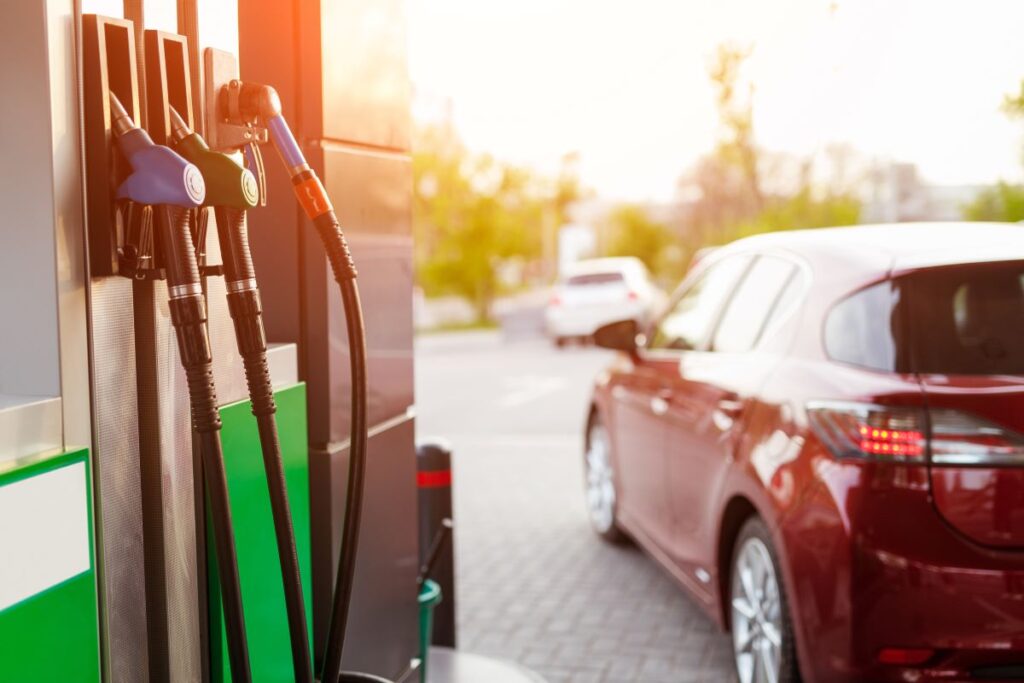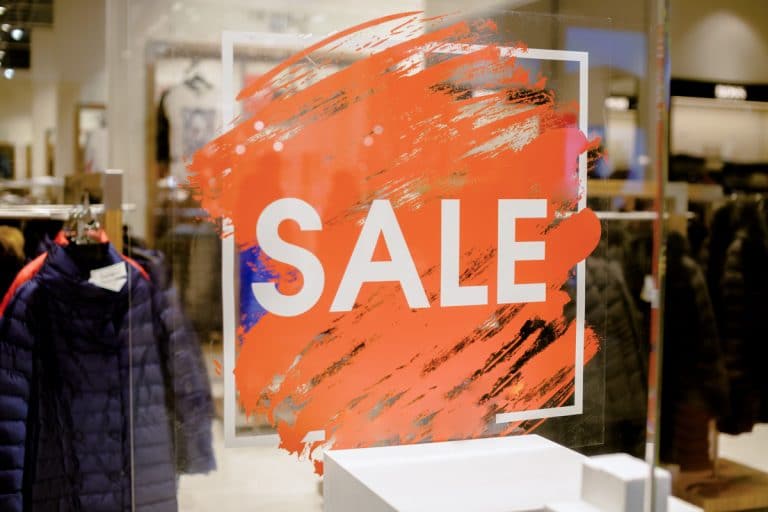How to Save on Fuel and Have More Money in Your Pocket
This website may earn commissions from purchases made through links in this post.
13 practical ways to save money on fuel and prevent being gouged at the petrol pump.

It doesn’t take much to set fuel prices soaring.
And because many of us rely on our cars for transport to work, school, the shops, and everywhere else we need to be, increasing fuel prices can significantly impact the family budget.
So taking steps to save on fuel will mean more money in your pocket for other things.
If you want to make the most savings, the best thing to do is ditch the car and walk, ride, catch public transport, or car share.
Of course, this isn’t practical for many of us, which is where the following tips come into play.
13 Ways to Save Money on Fuel
Below are 13 ways to save money on petrol.
Each tip will save you a couple of dollars each week. But if you do a few tips at once, those small savings will add up to significant savings over a year.
1. Drive Less and Drive Smart to Save on Fuel
Short trips can be costly in terms of fuel. If you can walk or ride a bike, then you’re spending zero dollars on petrol, and what better saving than that, right?
Not only that, short trips are more fuel-intensive because (older) cars use more fuel when the engine is cold to prevent stalling etc., while the engine warms up (this is less relevant with new cars, but walking still better than driving when you can).
When you need to get out and about, try to batch your errands to one day, write a list to ensure you don’t forget anything and plan out your route to avoid driving back and forth. Not only will this save you money, but it will also save you time and stress as well.
2. Reduce Idling Time to Reduce Fuel Costs
A recent study found that in normal traffic conditions, Australians idle for around 20% of their trip [source]. This idling is costly in terms of fuel costs as well as air pollution.
If we could all remove idling from our trip, that would be the equivalent of 1.6 million cars from the road in terms of pollution. And that doesn’t count drivers who leave their cars idling while parked.
If reducing air pollution doesn’t sell it to you, reducing idling can save you up to 10% of fuel costs. You can save even more if you usually leave your car idling while parked.
3. Fill Up When Petrol is Cheapest
Petrol prices fluctuate more than the weather.
So it will save you money to keep an eye on the prices and fill up when the price is lowest.
Prices also fluctuate between service stations. Fuel apps can help you find the best deal in your area. Some states have apps run by the state government, but there are also crowd-sourced apps if there isn’t an official one for your state. Choice has a great comparison on fuel apps (which you can read here). Here’s a list of apps available for Aussies:
- NSW FuelCheck
- FuelCheck TAS
- Fuel Watch
- Fuel Map Australia
- MotorMouth
- GasBuddy
- Petrol Spy Australia
- Fair Fuel (RACQ)
- ServoTrack
4. Use Points and Fuel Vouchers to Save on Petrol
While it’s good to support an independent petrol station over a conglomerate, if money is tight, those grocery points and shopping dockets that knock a few dollars off the petrol price can help. As long as you’re not spending money to save money (i.e., you were going to buy those groceries anyway), it can pay to use the fuel vouchers to save a few extra dollars.
When you shop at Woolworths, fuel discounts are linked to their Everyday Rewards Card, which also earns you points to redeem for grocery vouchers. When you shop at Coles, you a receive fuel voucher on your shopping docket when you spend over $30.
Some non-grocery chain service stations are keeping up by offering their own reward points to compete with the supermarkets. Puma offers discounts to RACQ and RAC WA members. The Easy Fuel Card is an independent alternative to the supermarket rewards card.
5. Correct Tyre Pressure will Reduce Fuel Costs
Studies have shown that a 1% decrease in tyre pressure correlates to a 0.3% decrease in fuel efficiency. This is because underinflated tyres increase ‘drag’ or resistance, and the car’s motor has to work harder and use more fuel to maintain speed. Ensuring your tyres are adequately inflated is not only safer, but it will also save you money. And it’s free to check your tyres’ pressure at the service station when you fill up.
According to NRMA, checking your tyres every week or two is a good idea if you drive regularly. Tyre pressure differs between cards, so check the tyre placard or owner’s manual for your car’s correct tyre pressure.
Incidentally, other car items that cause drag are rooftop cargo boxes, so if it’s not in use, it’s best to store them in the garage until needed.
7. Get Your Car Regularly Serviced
Getting your car regularly services is essential for safety, but the side benefit is that your vehicle will run more efficiently, saving you more money on fuel.
Clean air filters will help your engine run more smoothly; so too does new oil. Having your wheels aligned will also ensure your car is running at optimum.
8. Windows and Air Con and Their Effect On Fuel Efficiency
Tyre pressure isn’t the only thing that can cause drag and reduce fuel efficiency. Having the windows open when you travel at higher speeds – say on a highway at 100km/h – can be less fuel-efficient than air-con.
Speed matters, though.
When you’re driving around city streets or at lower speeds, it is more fuel-efficient to have the windows down than to have the air conditioning on. Air conditioning puts an extra load on the engine, so it needs more fuel to run.
If you’re trying to save money on petrol, thinking twice about having the air con on can make your fuel go a little bit further.
9. Lighter Loads = Better Fuel Efficiency
The more weight you are carrying in your car, the more your engine has to work and the more fuel it uses.
So if you carry things around in your car or boot that you don’t need, leaving them at home will save you a few extra dollars. And unless you’re on a long journey (in which case it’s better to fuel up, especially in the outback), keeping your petrol tank at half or less may also lighten the load.
10. Drive Steady and Reduce the REVS
If you’re doing city driving, you can’t always prevent the stops and starts, but you can reduce the revs by choosing the correct gear.
It’s more efficient to use higher gears sooner rather than later, which means gentle but quick acceleration at lights can be the most fuel-efficient way to drive.
Coasting to a stop can also increase fuel efficiency [source] by potentially reducing the amount of hard breaking and accelerating at lights (the light might change before you get there). On the other hand, ‘jack-rabbit’ starts and hard braking can increase fuel consumption.
If you can, avoid peak-hour traffic. If you commute to work, that may not be practical, but if you can choose your hours or if you are just running errands, driving in off-peak times will reduce your stress load and your fuel consumption.
11. Stick to the Speed Limit to Save Money on Fuel
Like many of the tips in this article, sticking to the speed limit not only saves you money on fuel, it helps keep you and others safe on the roads.
According to the UK’s Energy Saving Trust, the sweet spot for fuel efficiency is between around 90km/h depending on your vehicle and at a steady pace without accelerating and breaking. Cruise control can help.
“High speeds contribute to very high fuel use because aerodynamic drag increases with the square of vehicle velocity. As a result, even more modest reductions from high speeds to around 60 mph still result in significant fuel savings.” [source, page 4]
12. Buy the Correct Fuel For Your Car
Unless your car requires it, premium unleaded fuel can be significantly more expensive than regular unleaded without any benefit.
An RACV report also, surprisingly, found E10 can also be more expensive because, over a year, you end up using more. After all, it is less energy-efficient, although the difference is marginal.
Some cars need to run on premium unleaded, so check your owner’s manual to make sure you’re filling up with the right fuel.
13. Make Your Next Car Fuel Efficient
If you really want to save money on fuel, then buying the most fuel-efficient model for your budget and needs will save you $$$ over the course of its lifetime.
Just like our homes, our cars are trending bigger.
A family car used to be one with four doors rather than two. You’d trade your Datsun in for a Ford Falcon.
Nowadays, if you say ‘family car’, people think SUV and an SUV not only burns more fuel than a smaller car, but it also causes more air pollution. Consider the size of the car you really need and how you really use it, and buy one that will save you the most money.
Fuel is a necessary expense as long as we need cars for transport. That doesn’t mean you have to pay maximum dollar. Some smart driving and savvy shopping around will help you save on fuel so there’s more in your pocket for other things.






last week Alan Kohler did a break down on the cost of petrol something like 8cents in the litre goes to the petrols station. of the remaining money 50% goes to the governement, 50% is the cost of the petrol. It iritates the hell out of my wife but I buy my petrol like I buy shares I dollar cost average. I only every buy $20 because you can’t be sure if the price is low or high, that way I average it out. The airconditioner thing is true up to 60km/hr thing apparently (myth busters tested it) after that the air resistance of having the windows down ovesets the loss of running the air con.
Sorry for the babble it’s Friday and your the only Aus frugal blogger i know.
I find it easier to keep control of the finances to work out my average petrol usage and fill up to that amount each week. We are out of town, so petrol is the one thing we need to have. We would be stuck if we overspent on groceries, but then could not put petrol in the car.
It helps me keep an eye on usage, as I watch the needle go down I can judge how much driving I can do before next pay day. Sometimes I do need to put in an extra $20 if there is some extra driving needed that week, but it is easier than trying to manage random fill ups as required. Also it allows me to take advantage of the better pricing, as I can guarantee if I am running on empty the cost of fuel is up that day.
I also make judgements as to whether I am better of driving home when I have an hour or so to kill, or have forgotten something. It is a $6 round trip, so sometimes I am better staying in town for an hour or so and spending only $3.50 on a coffee.
Nothing irritates me more than buying petrol on what I guess to be the cheap day and then discovering it’s 4c cheaper the next day.
Would you believe that there is a website that petrol stations subscribe to that lists the current price of petrol in every other station (obviously they also submit their own to keep it current). This is why there’s no longer a predictable cycle: they just watch to see who goes up/down first and then follow along.
The ACCC is not happy about it but unfortunately there is a loophole in the law about price signalling – it’s not quite the same as cartel behaviour. So until they fix that we’ll just have to live with unpredictability.
The NRMA has a useful site that indicates the rolling weekly cheap day in Sydney. It also has daily average prices for a number of cities and towns around Australia.
http://www.mynrma.com.au/motoring/car-care/fuel-prices.htm
Ben, my husband does the same…and it irritates me too :) but with the cheap day being a mystery, he doesn’t have a choice sometimes. Feel free to bable any time you like!
Astrid, when I drove the car, I would have a similar system. But that was a few years ago and in Sydney and I could always get cheap petrol on Tuesdays.
Linda, my suspicion is that cartels exist. A friend of a friend of dad’s (you know how it is – so not necessarily very reliable information :) ) used to own a petrol station and there were phone calls in the middle of the night to say what he *had* to price his petrol at (with threats), because everyone else in town were adjusting their prices. Not sure if it’s a true story, but wouldn’t surprise me.
At the beginning of this year I changed from working 4 days between school hours to 3 full days. I gave the kids no choice but to catch the bus. Guess what after years of nagging they now ride their bikes. Apparently bike riding in Tassie’s winter is better than catching the bus?????? Some days I ride my bike too, which is downhill or flat to work but there’s a hill on the way home. Really noticed the savings on petrol. Not practical for everyone but is working for us. Looking forward to the warmer weather LOL.
Hi Freya, I forget about bike riding, good point! Glad you’re enjoying it, but you’re braver than I would be riding in Tassie winter!